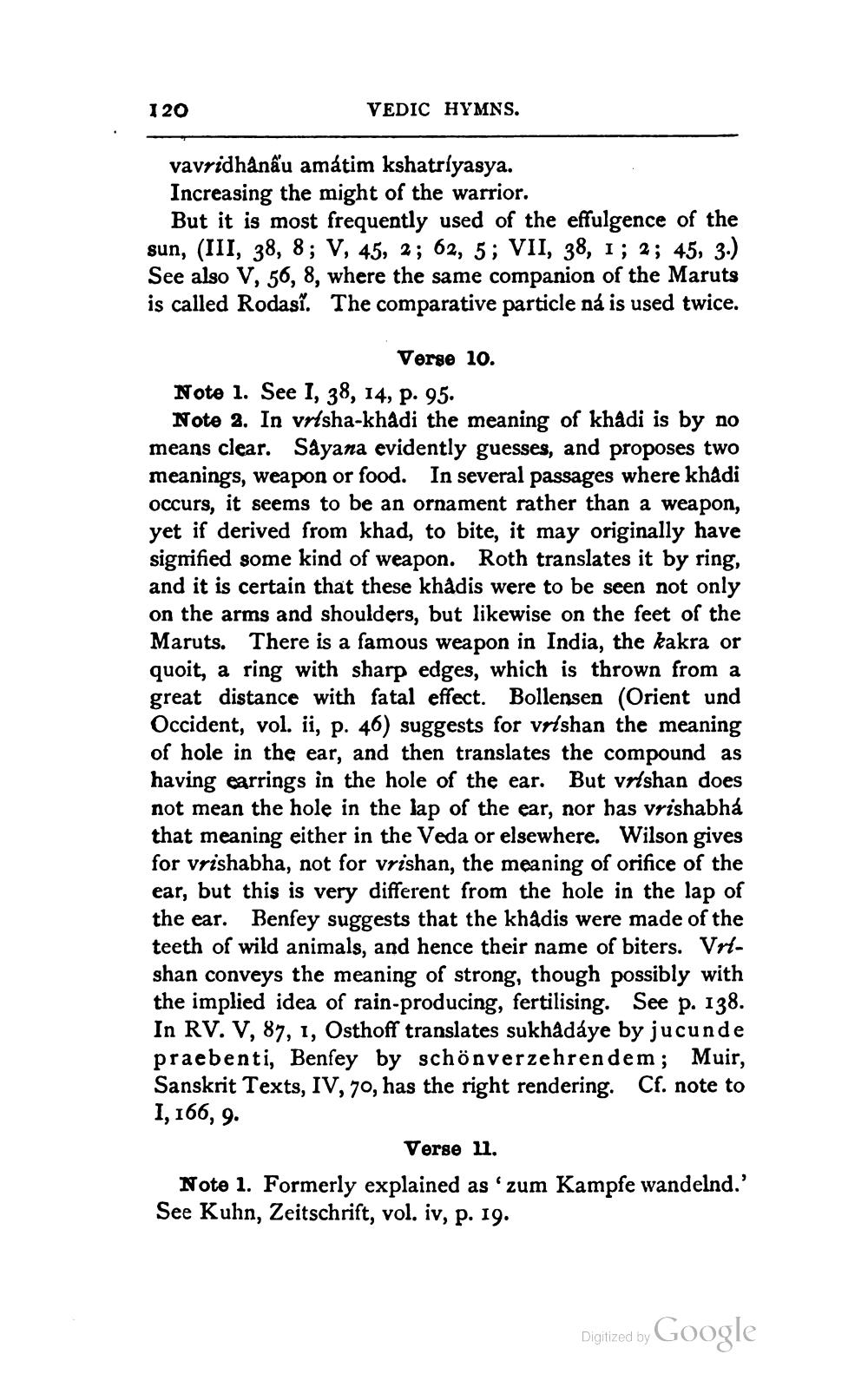________________
120
VEDIC HYMNS.
vavridhanấu amátim kshatriyasya. Increasing the might of the warrior.
But it is most frequently used of the effulgence of the sun, (III, 38, 8; V, 45, 2; 62, 5; VII, 38, 1; 2; 45, 3.) See also V, 56, 8, where the same companion of the Maruts is called Rodasť. The comparative particle ná is used twice.
Verse 10. Note 1. See 1, 38, 14, p. 95.
Note 2. In vrlsha-khadi the meaning of khadi is by no means clear. Sayana evidently guesses, and proposes two meanings, weapon or food. In several passages where khadi occurs, it seems to be an ornament rather than a weapon, yet if derived from khad, to bite, it may originally have signified some kind of weapon. Roth translates it by ring, and it is certain that these khadis were to be seen not only on the arms and shoulders, but likewise on the feet of the Maruts. There is a famous weapon in India, the kakra or quoit, a ring with sharp edges, which is thrown from a great distance with fatal effect. Bollensen (Orient und Occident, vol. ii, p. 46) suggests for vrlshan the meaning of hole in the ear, and then translates the compound as having earrings in the hole of the ear. But vrishan does not mean the hole in the lap of the ear, nor has vrishabhá that meaning either in the Veda or elsewhere. Wilson gives for vrishabha, not for vrishan, the meaning of orifice of the ear, but this is very different from the hole in the lap of the ear. Benfey suggests that the khadis were made of the teeth of wild animals, and hence their name of biters. Vrtshan conveys the meaning of strong, though possibly with the implied idea of rain-producing, fertilising. See p. 138. In RV. V, 87, 1, Osthoff translates sukhadaye by jucunde praebenti, Benfey by schönverzehrendem; Muir, Sanskrit Texts, IV, 70, has the right rendering. Cf. note to I, 166, 9.
Verse u. Note 1. Formerly explained as 'zum Kampfe wandelnd.' See Kuhn, Zeitschrift, vol. iv, p. 19.
Digitized by
Digitized by Google




